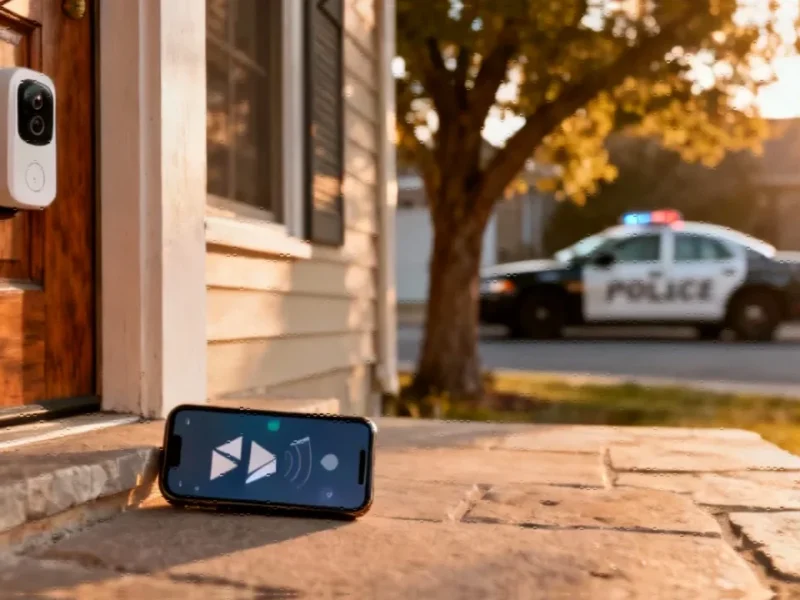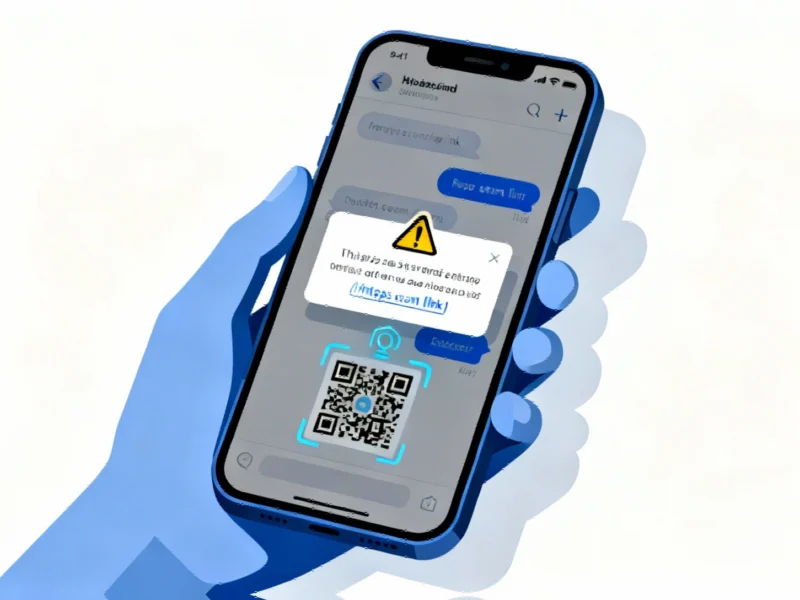Note: Featured image is for illustrative purposes only and does not represent any specific product, service, or entity mentioned in this article.
Expanding Surveillance Networks
Amazon’s Ring has entered a new partnership with Flock Safety, a prominent video surveillance company, enabling law enforcement agencies using Flock’s Nova or FlockOS platforms to request video footage directly from Ring users through the Neighbors app. This collaboration represents a significant expansion of police surveillance capabilities that privacy advocates warn could create an unprecedented network of interconnected home surveillance systems.
The integration, which began rolling out in recent months, allows law enforcement to submit requests for footage that will appear in the Neighbors app feed to users in specific geographic areas. According to Ring, these requests must include details about an alleged crime, including time and location information, along with a unique investigation code. However, the company’s new Search Party feature, which facilitates these requests, is enabled by default for users.
Voluntary Participation with Privacy Concerns
Ring emphasizes that participation in what it calls the “Community Request” program is completely optional. Users can disable notifications for these requests entirely, and the company states that law enforcement cannot see which users receive their requests or who chooses to decline them. This approach mirrors similar industry developments in balancing public safety with individual privacy rights.
Despite these assurances, digital rights organizations have expressed concerns about the normalization of warrantless surveillance. “When these requests become commonplace, there’s significant pressure on homeowners to comply, even when they might have reservations,” notes a privacy advocate familiar with the system. This development comes amid broader market trends toward increased integration between private security systems and law enforcement platforms.
Historical Context and Policy Changes
Ring’s relationship with law enforcement has evolved significantly over time. The company previously faced criticism for its “Request for Assistance” feature, which it discontinued in 2024. However, Ring maintained the ability to share data without warrants in what it deems emergency situations, a policy exception also employed by Google for its Nest products. This approach to related innovations in smart home technology continues to generate debate about the appropriate balance between security and privacy.
The timing of this partnership is particularly noteworthy given ongoing technological advancements across multiple sectors and increasing public awareness about data privacy issues. As surveillance networks expand, homeowners face increasingly complex decisions about their participation in these systems.
Broader Industry Implications
This partnership reflects a larger pattern of integration between different surveillance technologies and platforms. Similar to how transportation systems are becoming more interconnected, home security platforms are increasingly forming networks that extend beyond individual properties. This trend toward comprehensive monitoring systems represents one of the most significant recent technology shifts in the security industry.
The business implications are substantial, as evidenced by strong financial performances across the technology sector. Companies that successfully navigate the complex landscape of privacy concerns while delivering security solutions stand to benefit significantly. Meanwhile, the debate continues about appropriate oversight for these integrated systems, particularly given critical infrastructure challenges in other sectors.
User Considerations and Options
For Ring users concerned about privacy, several options are available:
- Review default settings: The Search Party feature is enabled by default, so users must actively disable it if they prefer not to participate
- Customize notification preferences: Users can turn off law enforcement request notifications while maintaining other Neighbors app functionality
- Understand data sharing policies: Ring’s privacy policy outlines how and when data may be shared, including emergency exceptions
- Consider camera placement: Strategic camera positioning can capture security-relevant footage while minimizing intrusion on neighbors’ privacy
The conversation around these surveillance partnerships intersects with broader discussions about AI integration in corporate environments and the ongoing debate between technology development and safety advocacy. As these systems become more sophisticated and interconnected, the need for clear guidelines and transparent policies becomes increasingly urgent.
Homeowners now face the challenge of balancing their legitimate security concerns with important privacy considerations, all while navigating an evolving landscape of industry developments that frequently introduce new capabilities—and new dilemmas—with limited public discussion or regulatory oversight.
This article aggregates information from publicly available sources. All trademarks and copyrights belong to their respective owners.

